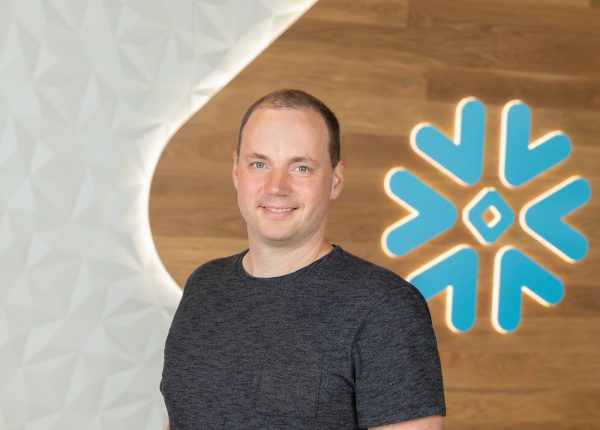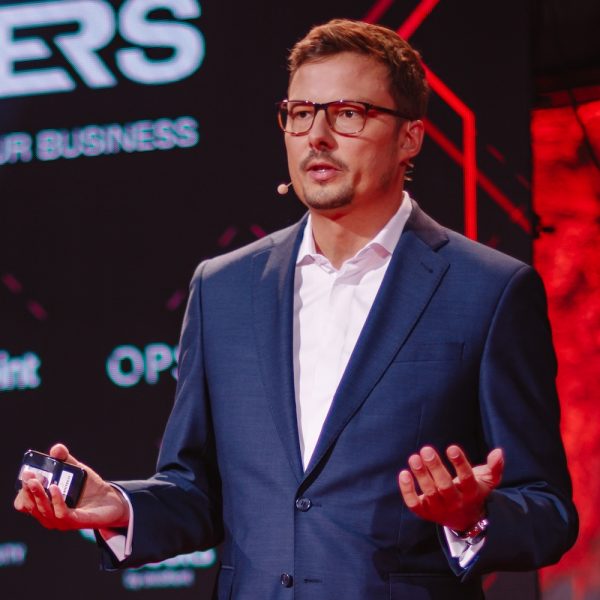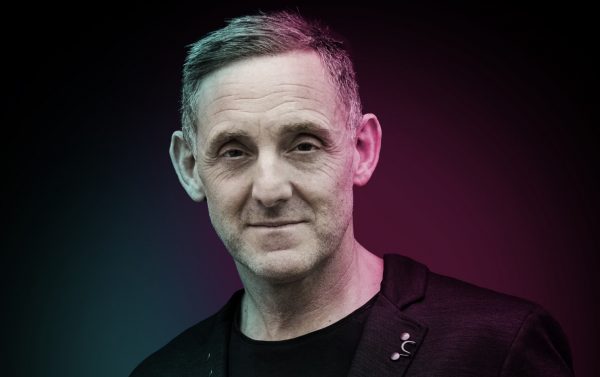Tech Trends in 2023

As the new year fast approaches, what tech trends should your business pay close attention to? How will the tech landscape change? And how must your enterprise evolve to meet the challenges 2023 will deliver?
Gabriel Aguiar Noury, Robotics Product Manager at Canonical.

“In 2023, social robots will be back. Late in 2022, we saw companies like Sony unveiling robots like Poiq. This set the stage for a new wave of social robots. Powered by natural language generation models like GPT-3, robots can create new dialogue systems. This will improve the robot’s interactivity with humans, allowing robots to answer any question. Social robots will also build narratives and rich personalities, making user interaction more meaningful. GPT-3 also powers Dall-E, an image generator. Combined, these types of technologies will enable robots not only to tell but show dynamic stories.
“However, this is not only about the novelty effect. Dall-E will keep pushing research to help robots define their behaviour based on their surroundings. As image detection and context generation merge, robotics scene awareness and social intelligence will take a new leap. By generating a detailed textual description of an image, robots will soon be able to understand the room they are in or what people are doing. This is another step towards real autonomy.”
Adrien Treuille, Head of Streamlit, Snowflake.

“Application development will become a two-way conversation between producers and consumers. The advent of easy-to-use low-code or no-code platforms is already simplifying the building and sharing of interactive applications for tech-savvy and business users. Based on that foundation, the next emerging shift will be a blurring of the lines between two previously distinct roles — the application producer and the consumer of that software.
“Application development will become a collaborative workflow where consumers can weigh in on the work producers are doing in real-time, for instance, by commenting on code. Effectively, application creation will follow a similar path to other digital artefacts such as documents, diagrams, and presentations, where collaborative and iterative workflows enable two-way peer collaboration through tools such as Google Docs, Google Slides, and Figma. Taking this one step further, we’re heading towards a future where app development platforms have mechanisms to gather app requirements from consumers before the producer has even started creating that software.”
Greg Jones, Vice President of Business Development, EMEA, Datto (a Kaseya company).

“Businesses will outsource more of their security. Security is, as always, a top concern. Ransomware and cybercrime show no signs of slowing down. Supply chain attacks will remain a headache. Connected devices and remote working have brought new risks, and social engineering is becoming smarter.
“In addition, attackers are now using artificial intelligence and machine learning against their victims – for example, to scrape information off social media platforms, to track users’ behaviour and exploit certain time windows where they may be more susceptible to attack. Couple all this with shrinking IT budgets and a shortage of cybersecurity professionals and businesses have a perfect storm on their hands. Offering extended security services will be a huge opportunity for MSPs who can fill talent gaps, add agility, and provide the right expertise.”
Christian Borst, EMEA CTO, Vectra AI.

“Supply chain attacks will continue, but hackers will look beyond the ‘usual suspects’ to cause havoc. Attackers will continue to cause maximum disruption in the form of supply chain attacks, but instead of targeting key suppliers, they will look beyond the ‘usual suspects’ to gain access to networks. For instance, this could include legal or accounting firms. A holistic approach may help turn the tables on the matter: supply chain means partnership – partnership means collaboration and supporting each other. Only as a ‘mesh’ interconnected structure with consistent resiliency can companies thrive in the digital economy. This includes ensuring that they review the security policies of all those in the chain.
“Organisations will use automation to recover from ransomware attacks. Traditional restoration procedures following a ransomware attack are both costly and time consuming for organisations; therefore in 2023 we will see organisations look to automation, via infrastructure as code (IaC), to reduce downtime. Through IaC, organisations can develop scripts that enable key infrastructure to self-heal so they can automatically return to action. Ultimately rebuilding broken infrastructure from scratch is a far quicker process than restoring because of automation.”
Bernd Greifeneder, Founder and CTO, Dynatrace.

“Trustworthy AI will emerge as a required attribute for organisations that need to drive widespread automation of their increasingly complex digital ecosystems.
“As organisations strive to do more with less and forge ahead through rising macroeconomic headwinds, automation will be more critical than ever in 2023. This will enable organisations to free skilled resources to focus on tasks that deliver the greatest value and avoid the unattractive prospect of cutting back on digital projects and innovation. However, the growing awareness of the potential for bias in AI will be a barrier to widespread automation in business operations, IT, development, and security.
“Organisations can’t afford to drive automated runbooks with AI that can be fooled into confusing the symptoms of a problem with its root cause, that prioritises lower-risk issues over ones that have true business impact, or that implement the wrong solutions. Without trustworthy AI, human operators will continue to feel compelled to manually validate any answers their AI-powered solutions provide. This will negate efficiency gains and hinder efforts to automate business, development, security, and operations processes. Trustworthiness will, therefore, emerge as a prerequisite for any AI solution – through its ability to provide precise and explainable answers instead of statistical guesses.”
Jonathan Summerfield, Founder and CEO, Xiatech.

“Composable goes mainstream. Recognising that legacy technologies are holding their organisations back from quickly responding to shifts in the market, including threats and opportunities, the majority of executives at large retailers will add composability (selecting and integrating best-of-breed digital services and business applications rather than monolithic ERP implementations) as a board-level topic as they explore how to improve business agility.
“Hyper-Integration gains industry acceptance. The urgency of organisations to significantly shorten time-to-insight required to accelerate business transformation, while lowering the total cost of technology, will drive business and IT leaders to rapidly adopt Hyper-Integration Platforms that unify real-time system integration, data management, advanced analytics and process automation capabilities in a single solution.”
Adam Brady, Director, Systems Engineering, EMEA, Illumio.

“There will be a Shift from ‘find and fix’ to ‘limit and contain.’ In 2023, attention will shift from prevention at the perimeter and choosing the most “bulletproof” IT infrastructure model, to breach containment. We will see acceptance in the industry that breaches are here to stay, and security strategies evolve to take this into account. It will no longer matter if it’s on premise, hybrid, cloud or at the edge, what will be important is maintaining visibility across the entire estate. Organisations will need to know where the vulnerabilities are in their environment and then proactively implement policy to contain breaches early on and limit damage. Ultimately, breach containment will be the new resilience paradigm in 2023.”
Sarah Marrs, Director, EX Product Science, Qualtrics.

“Companies will have to address friction from inefficient processes and technology to improve productivity and relieve symptoms of employee burnout. The pandemic exposed and elevated broken processes impeding worker productivity and simultaneously introducing new challenges. Less than two-thirds (59%) of UK workers say work processes enable them to be productive, down from 63% a year ago.
“Beyond inefficient processes, fewer employees say their technology helps them be productive compared to last year, falling from 61% to 56%. For example, the rapid shift to new technologies during the pandemic made it challenging to introduce cohesive tech strategies, leading to teams using different apps to perform the same tasks or requiring multiple apps to complete a single process.
“The combined effect of these challenges is 40% of employees showing symptoms of burn out, and 37% saying they feel emotionally drained from their work. Heavy workloads, inefficient processes and lack of cohesive tech strategies are all contributors to employee burnout. Burnout is exacerbated by frustration and alienation – the right listening tools can help employers understand the challenges their people are facing and implement changes that alleviate frustrations.”
Simon Chassar, CRO, Claroty.

“The role of the Chief Information Security Officer (CISO) is also going to change in 2023, primarily as OT environments converge with IT from an overall risk responsibility, and they will emerge as the owner of both IT and cyber-physical systems. CISOs are essential in maintaining business continuity, particularly availability and uptime with reputational and regulatory risk – which will be a crucial concern to the board. Therefore, a CISO’s role will be defined as the ultimate Risk Officer, and they will become more aligned with the board and start to gain parity from a level as the Chief Information Officer (CIO).
“Additionally, due to the increase in inflation and supply chain costs, companies are trying to balance multiple projects at the same time, including digital transformation, security risk and IT debt. Decision-makers must prioritise these projects and implement risk and mitigation strategies to combat the current economic situation. For example, more organisations will move to multi-cloud to deal with their technical debt and gain automation benefits.
“The current state of the global economy will also encourage hyperscalers to move towards an M&A cyber strategy. Organisations’ are implementing multi-cloud environments and looking for security solutions that support these environments, which are secure by design and best of breed. Furthermore, start-ups will struggle as we see less investment from Private Equity or VCs, therefore creating an opportunity for some of the larger cash-strong security control companies to gain market share at a relatively low price.”
Nick Earle, CEO, Eseye.

“The ascendance of ‘network agnostic’ and ‘multi-RAT.’ As modem costs drop, there is increased interest in utilising Multiple Radio Access Types (RATs) and different network providers, delivering a mix of options to optimise connectivity of IoT deployments. There are also incredible innovations happening in areas such as Low Earth Orbiting (LEO) satellite constellations and device-to-cloud satellite communications. As these different types of networks increase, devices will need better functionality and in 2023 there will be more devices with multiple modes of connectivity to work wherever they find themselves. The next generation MVNO must embrace a multi-RAT design strategy and seamlessly support and optimise network solutions across cellular, Wi-Fi, LoRaWAN, satellite and more.”
Keith O’Kelly, Chief Revenue Officer, Enterprise Service Management, IFS.
“Today’s technology solutions are becoming increasingly available on the cloud, taking advantage of the accessibility, agility, and flexibility this environment offers. As a result, organisations are implementing various cloud solutions (public, private, hybrid and multi-clouds) across the business to meet compliance and performance requirements.
“A big focus next year will be learning how to manage these different resources effectively and securely. IT environments are growing in complexity, making it difficult for teams to gain a unified view and track all technology deployed within the enterprise. This is particularly detrimental in today’s evolving business landscape, with organisations needing to adapt at speed.
“Distributed cloud will quickly become a ‘must have’ for many organisations. Using this approach, one central location manages resources across different departments in multiple locations. This gives business leaders greater visibility of their assets while providing scalability and agility that is cost-effective.
“Getting the tools in place that make asset discovery easier and building a comprehensive Configuration Management Database will also be advantageous in supporting your IT asset management.”
Brian Solis, VP, Global Innovation Evangelist, Salesforce.

“Some companies are going to batten down the hatches and cut costs. Markets, though, will continue to evolve. Customers will continue to shop, make decisions, learn and exercise new behaviours, and gain new digital competencies. Competitiveness in this market becomes a matter of ‘digital Darwinism.’
“To survive and thrive, businesses must adapt to the pace at which technology influences how society and technology evolves. And to do this, businesses need to be bolder, and wiser than their peers. Smart companies will reallocate resources to build the business of the future, today. Forward-looking executives will issue RFPs that seek vendor collaboration and solutions beyond immediate technological needs or basic automation. They will aim to develop customer-centred solutions that remove friction, effort, and emulate best-in-class experiences to compete.”
Mike Hoy, Technology Director, Pulsant.

“Connectivity will be about more than a mast. 2023 will be the year when connectivity comes more sharply into focus. In the EY survey of UK businesses, 43 per cent admit they need help understanding how 5G connectivity relates to emerging technologies such as edge computing. This is worse than the global average of 39%, Yet 5G will continue to grow in the UK. EE claims its 5G network was the first to cover half of the UK.
“Applications focused on real-time, aggregated data analytics need connectivity that either has low jitter, loss and lag or has dedicated high bandwidth. The telcos have been the first movers in this market with 5G, but carrier fibre delivers more dependable waves.
“MECs (multi-access edge computing environments) provide IT services, compute, and cloud access, but this will soon give way to sliced radio networks or shared services at the metropolitan level. There are already live use cases in the transport and energy sectors, but large-scale adoption will follow once edge infrastructure platforms have fully developed their low latency connectivity, high-speed backhaul to the public cloud and local computing capabilities.
“Expectations will grow as businesses see how the rollout of 5G mobile connectivity really enables transformational efficiency changes. For example, in oil, gas and minerals extraction and processing, high capacity and high bandwidth 5G opens the door to analytics-driven automation and digital twin modelling, regardless of location.
“Businesses looking to implement these technologies will want to benefit from direct connectivity to the world’s top cloud-providers at the same time as processing data locally to achieve the right level of latency and cost-optimisation. Organisations will seek simplicity in cloud connectivity partnerships, to avoid the complexity of using different exchanges and third-party networks.”
Nadia Alramli, VP of Engineering at HubSpot.

“User control and privacy. We’ve seen an increase in user privacy concerns recently, with Apple introducing privacy changes to their phones and Google following suit by phasing out third-party cookies, and we expect these changes to continue. Many brands are attempting to combat it; obviously, tracking engagement, clicks, referrals, open rates, and so on is critical for marketing.
“However, at HubSpot, we believe that the best course of action is to embrace rather than fight this change. Respect user privacy instead of trying to exploit it. Change your focus from invading that privacy to working around it – give customers something in exchange for engaging with your content. Make the user want to interact with your content for the right reasons, such as the value you provide, rather than relying on deceptive methods of obtaining that information.
“We believe that, despite these increased privacy measures, there are still many ways to determine if your content is being accessed while still respecting the privacy of your visitors. Newsletters, replies, and clicks can all be used to interact with customers. Human-like WhatsApp conversations are a great example that customers enjoy, and it is tools like these businesses can use to organically interact with their customers without invading their privacy. Third-party cookies cannot be used to track users, but first-party cookies can – you must engage your customers for them to interact with you, and you can use this engagement to determine what they want to see more of.”